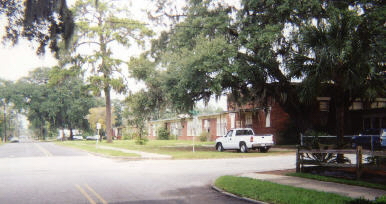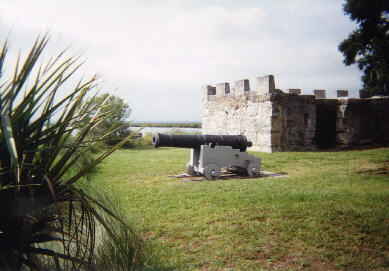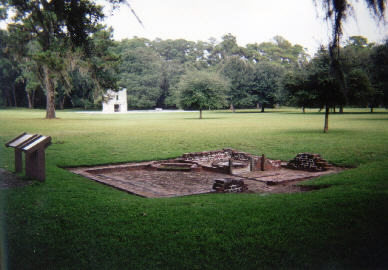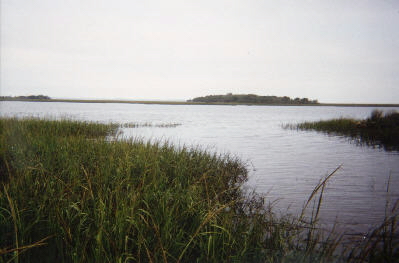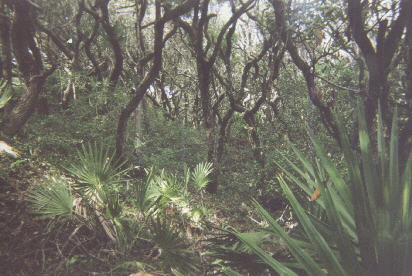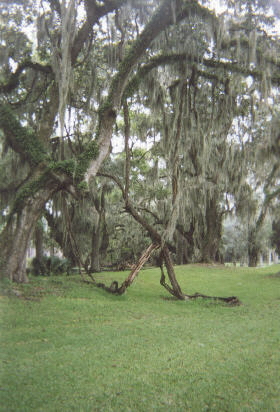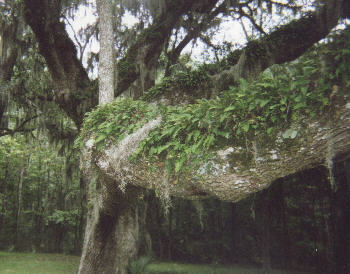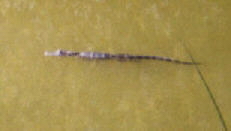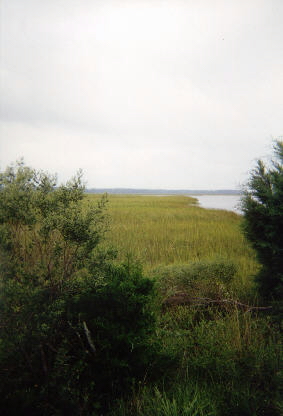 |
Coastal Island CampI spent two nights at a county run campground on Blythe Island. Blythe Island is sheltered by other islands, so it doesn't have any surf-exposed beaches. What it does have is maritime forest and tidewater marshes (left).I can't say I enjoyed the camping much. The first night I arrived after sundown and had to pitch my tent in the dark. In the rain, too. Once I'd settled in, the rain stopped, though, and it was a really pleasant night. The second night it rained as well, but it was also hot and muggy. |
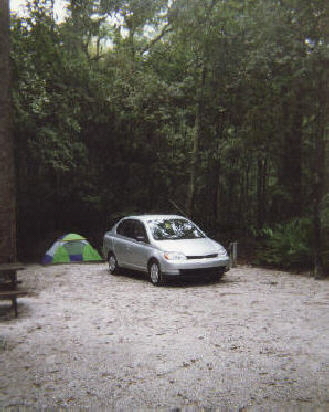 |
|
Wildlife there was pretty cool, though. There were lots of sea birds and a semi-wild turkey... well, it was pretty-well tamed, really, and pretty good at bumming handouts from the tourists. I also came across a foraging armadillo on a trip to the restroom around 4:00 AM.
| ||
|
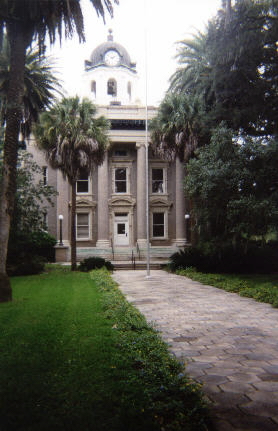 |
||
|
The picture pretty much shows my perspective when I first saw the library. You can't see it, but there's a big yellow Public Library sign under the porch at the near end of the building. So I parked at that end of the building. It turns out they've closed the entrance there, and patrons have to enter the library from the far end.
Once inside, I learned that the reference department (my destination) is really just inside the closed entrance, so I had walked the length of that very long building four times before it was over. Research can be so exhausing, don't ya find? | |||
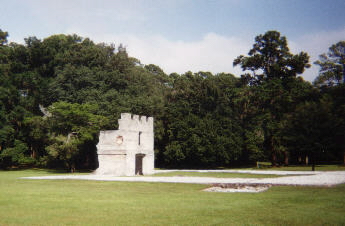
|
Fort FredericaFort Frederica is the site of a colonial fort on St. Simons Island. It was founded by James Oglethorpe in 1736 to defend the Carolinas against the Spanish, who occupied Florida at that time.It's now a national monument, and the park service has put together a self-guided tour with informative historical notes on plaques along the route. | |||
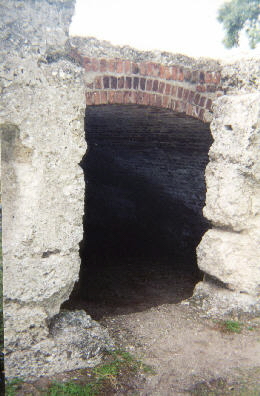 |
|
|||||
|
The original fort had a wall made of packed earth surrounded by a moat. 250 years later, there's only a slight trace of them. In the picture, the "wall" runs along the right side, and the "moat" is the slight depression just to its left.
|
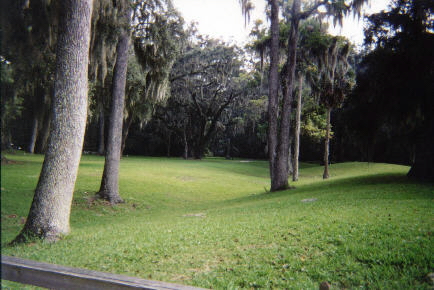 |
|||||
|
Archaeologists have excavated the foundations of several houses and businesses in the community, and have documented the vocations of the occupants, frequently giving excerpts from letters and other historical documents that give interesting perspectives on the lives, personalities, and relationships of the colonists.
I took the picture of this foundation (left) because there was something special about it, but I can't remember what it was. (!!!)
|
|||
(There's more info available from the U.S. National Park Service here.)
 |
The Inner Shores
|
||||
| |||||
| |||||
'Gators and Pond Scoggins
|
The wildlife was a big part of the fun. I was surprised at the number of alligators I just happened onto in the freshwater ponds of Jekyll Island. At one pond I counted six 'gators 3 or 4 feet long about 30 feet away, then I looked down at my feet and saw the head of one who looked much larger about 6 feet from me, just under the water. That one never surfaced -- or moved at all, for that matter (and the pictures didn't turn out, so you'll just have to take my word for it). I'm not sure whether the big white bird is a heron or an egret, but it's known locally as a "pond scoggin", and that's what I've called it all my life. |

|
